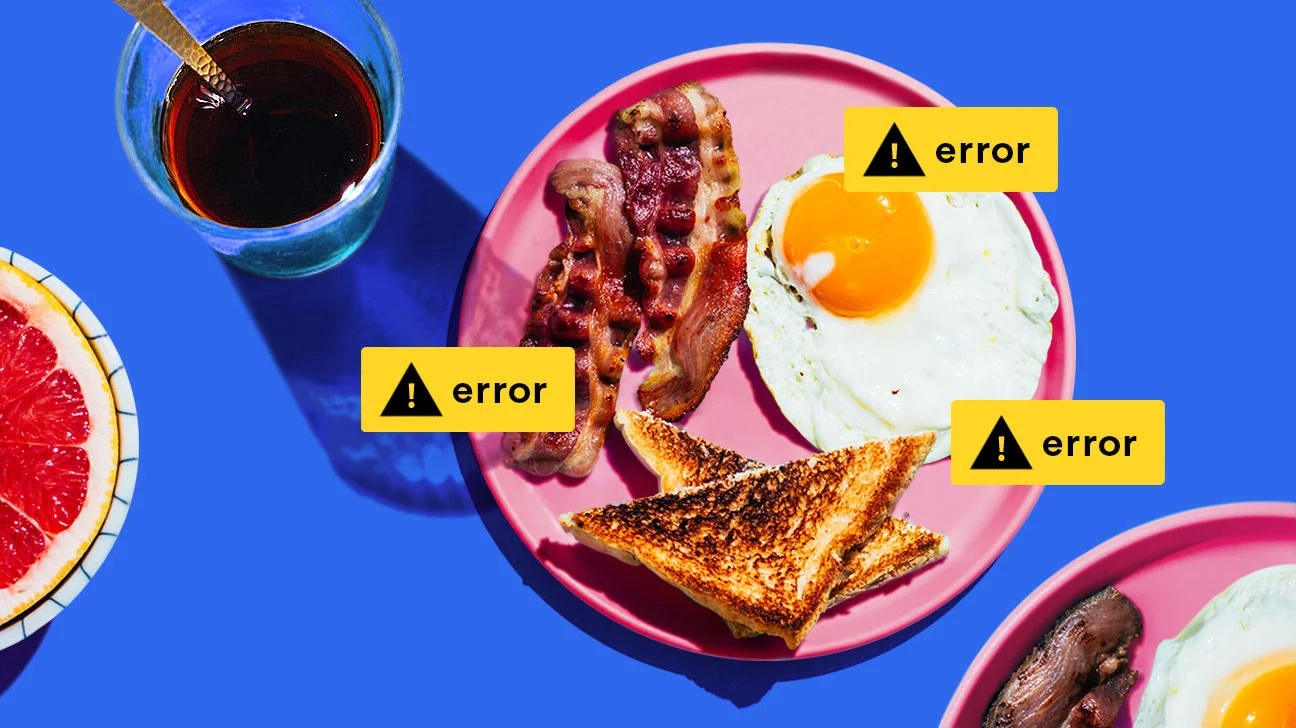
It seems like everyone and their cat is on a special diet. Maybe you’ve wondered if you might have a food allergy or intolerance, especially if you feel a little bloated after eating dairy or wheat.
Trying a super restrictive elimination diet or some fancy “cleanse” to find out whether dairy, gluten, or shellfish is triggering your symptoms may seem exhausting and no fun. The list of what you can’t eat could be longer than the one of what you can eat!
Luckily, there’s an easier way to figure out if you have a food intolerance. Consider our plan the Cliff’s Notes version. It may help you identify the food(s) causing your misery.
First, it’s important to know the difference between a food allergy and an intolerance. They can cause the same symptoms, so they’re easy to mix up.
When you’ve got a for-real allergy, your immune system reacts to the food. An intolerance is more of a sensitivity or trouble digesting the offending food.Kleine-Tebbe J, et al. (2016). Food allergy and intolerance: Distinction, definitions, and delimitation. DOI: 10.1007/s00103-016-2356-1
A severe food allergy is nothing to sneeze at or self-diagnose. If, immediately after you eat certain foods, your throat tightens, you can’t breathe, or you get hives, call a board certified allergist ASAP.
Before diving into an elimination diet, it’s important to have an idea of whether you have a true food allergy or a food intolerance.
Symptoms like constipation, headaches, heartburn, fatigue, bloating, or trouble swallowing may signal a food intolerance. Sometimes the symptoms will get worse 1 to 3 hours after you eat the food. But often the timing makes it unclear if diet or something else is causing your problems.
Blood and skin tests can help identify allergies. But even after these tests, the diagnosis may not be clear. Sometimes doctors recommend a food challenge to confirm the food sensitivity.
Food challenges — where your doctor gives you small doses of the possible food trigger and watches you for symptoms — are considered the “gold standard” for diagnosing allergies.O’Keefe AW, at al. (2014). Diagnosis and management of food allergies: New and emerging options: A systematic review. DOI: 10.2147/JAA.S49277
For an intolerance, you can try an elimination diet. You take a group of foods out of your diet for a certain period of time and then reintroduce them to pinpoint which ones are causing you to react. It’s best to do this under an allergist’s guidance.
The plan below is a little different from a full elimination diet where you take out eight or more foods at the same time. It can be really cumbersome to take out so many foods at once.
Recent research has found that you can also deprive yourself of nutrients if you cut out too many foods.Lim HS, et al. (2018). Food elimination diet and nutritional deficiency in patients with inflammatory bowel disease. DOI: 10.7762/cnr.2018.7.1.48
This modified version is a lot easier, because you eliminate only three or four foods at a time for 21 days. It should take about that long to notice any difference in your symptoms.
After those 21 days of avoiding certain foods, you should feel better if you’ve hit on the right trigger. That’s when you reintroduce foods one by one, following your doctor’s advice. Allow at least 3 days after reintroducing each food, so you can see how your body reacts.
If you add back all the eliminated foods and you have no symptoms, move on to the next step of the plan, when you take out new foods. Continue doing this until a certain food causes symptoms — that’s likely your trigger.
You can stop the diet at that point or continue if you think more than one food is at fault. Start by cutting out the most common offenders. Then move to less common ones, which should mean you can figure out your culprit faster.
During each phase, make sure to check in with your doctor. And read food labels to see if packaged goods contain any ingredients you’re avoiding. Forms of gluten, dairy, and other triggers can hide in more places than you might think!
When you eat out, ask the restaurant staff what’s in dishes. For example, are the vegetables cooked in butter, or is peanut oil used in that stir-fry?
You won’t have to worry about being hungry if you avoid only some foods. If you do get the munchies, you can always chow down on lots of fruits, vegetables, and healthy fats such as avocado and coconut.
Phase 1 (days 1 to 21)
- Breakfast: oatmeal with almond milk, berries, and sliced almonds, along with tea with nondairy milk (such as almond or coconut)
- Lunch: large salad that includes avocado, onions, jalapeños, tomato, peppers, spinach, hemp seeds (optional), and spirulina (optional) tossed with balsamic vinegar, olive oil, and nutritional yeast (optional)
- Snack: 1/2 cup raw nuts and seeds with an almond milk cappuccino
- Dinner: chickpea stew, leftover salad from lunch, and 1 cup cooked brown rice
- Dessert: 2 squares of nondairy extra dark chocolate
Phase 2 (days 36 to 58)
- Breakfast: green smoothie: Blend almond, coconut, or rice milk; spinach; kale; berries; and chia seeds (optional).
- Lunch: black bean and spinach burger: Mix cooked black beans, cooked spinach, cooked oatmeal, salt, cumin, black pepper, onions, and garlic. Form into patties and grill. Top with avocado. Serve with green salad.
- Snack: 10 raw cashews and 1 cup coconut water
- Dinner: roasted sweet potato and vegetables in marinara sauce
- Dessert: 2 almond butter oat balls: Combine rolled oats, almond butter, and dark chocolate chips and form into 2-inch balls.
Phase 3 (days 68 to 90)
- Breakfast: egg or sprouted tofu scramble, berries, and green tea
- Lunch: kale, apple, and almond salad with citrus dressing
- Snack: 1/2 cup nuts and seeds
- Dinner: grilled portobello mushrooms (marinate in balsamic vinegar, garlic, salt, and onions first) served over quinoa pilaf made with almonds and scallions
- Dessert: gelato: Blend 1/2 cup frozen cherries with full fat coconut milk.
Phase 4 (days 97 to 103)
- Breakfast: chia seed pudding: Mix chia seeds, coconut milk, sliced strawberries, and sliced almonds and refrigerate overnight.
- Lunch: baked portobello mushrooms stuffed with diced tomatoes, peppers, onions, and basil and topped with cheese (optional)
- Dinner: quinoa with sautéed mushrooms, kale, and cubed sweet potato
- Dessert: berries mixed with unsweetened coconut flakes, lime juice, and basil
Let’s say you found out gluten is a problem for you. Avoiding eating it and using it as an ingredient should spare you from symptoms.
Yes, this means asking about ingredients at restaurants and reading labels. But you don’t have to cut out foods “processed in a facility with gluten” since a trace won’t throw you into allergic shock.
You may even be able to enjoy some wheat on rare occasions without many issues — provided you don’t have celiac disease. Once you give your immune system and gut a break from the food and it heals, small amounts may be tolerable. Hello, birthday cake!
Amy Shah, MD, is a medical doctor specializing in food allergies and gut health. She combines her nutrition background with medical training from Harvard and Columbia universities to help people with gut problems.
https://greatist.com/grow/easy-elimination-diet-for-food-intolerance

